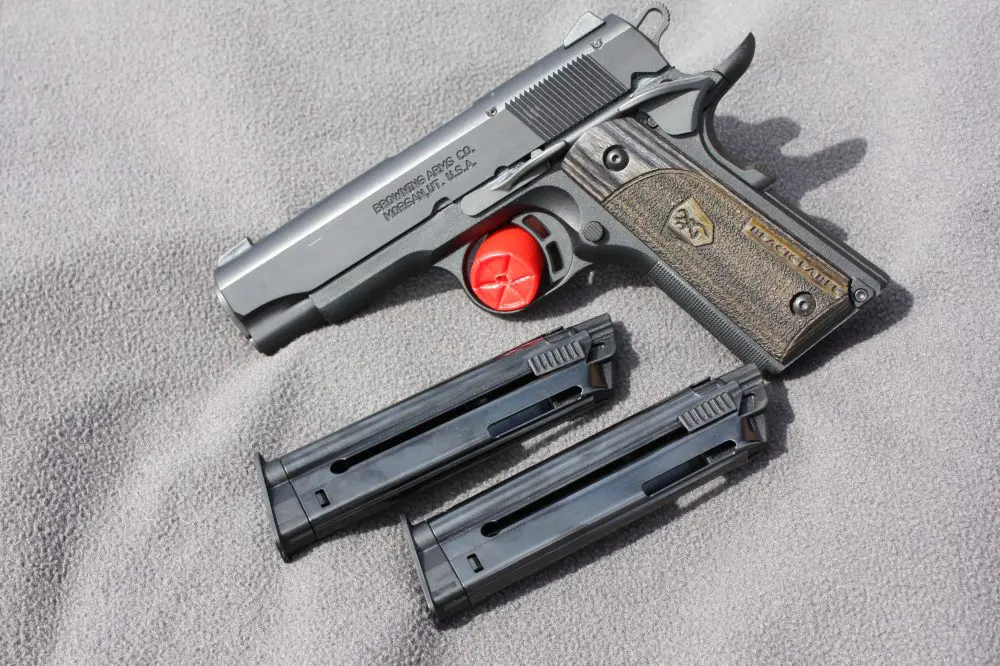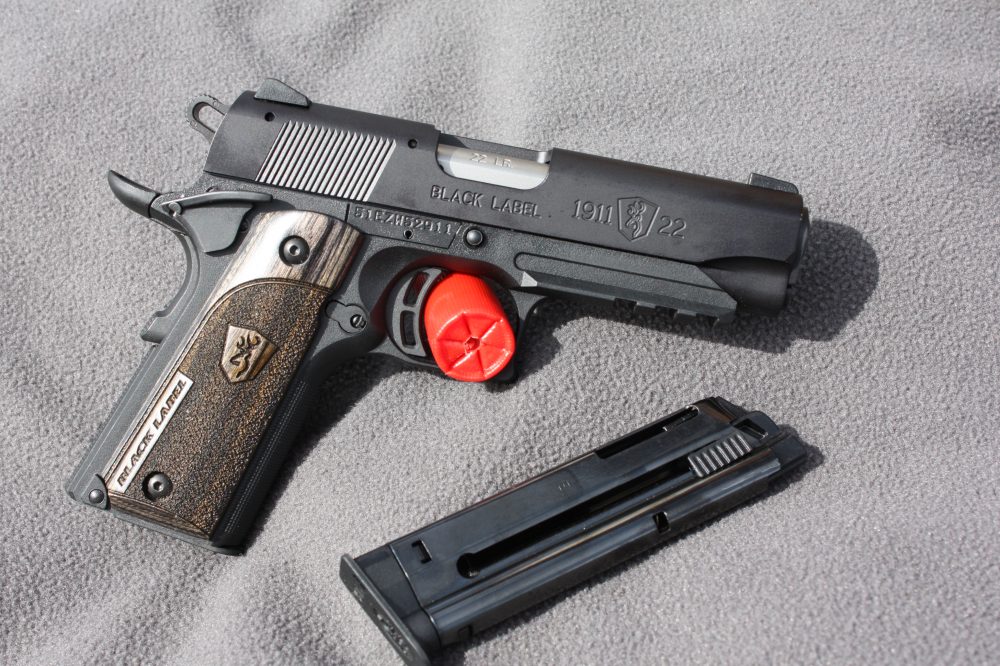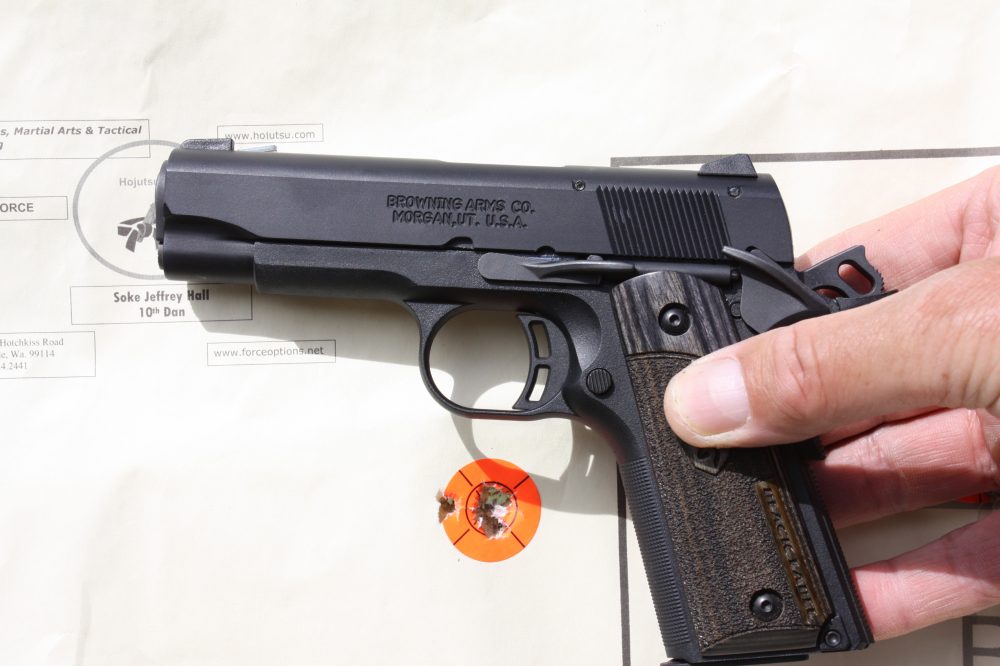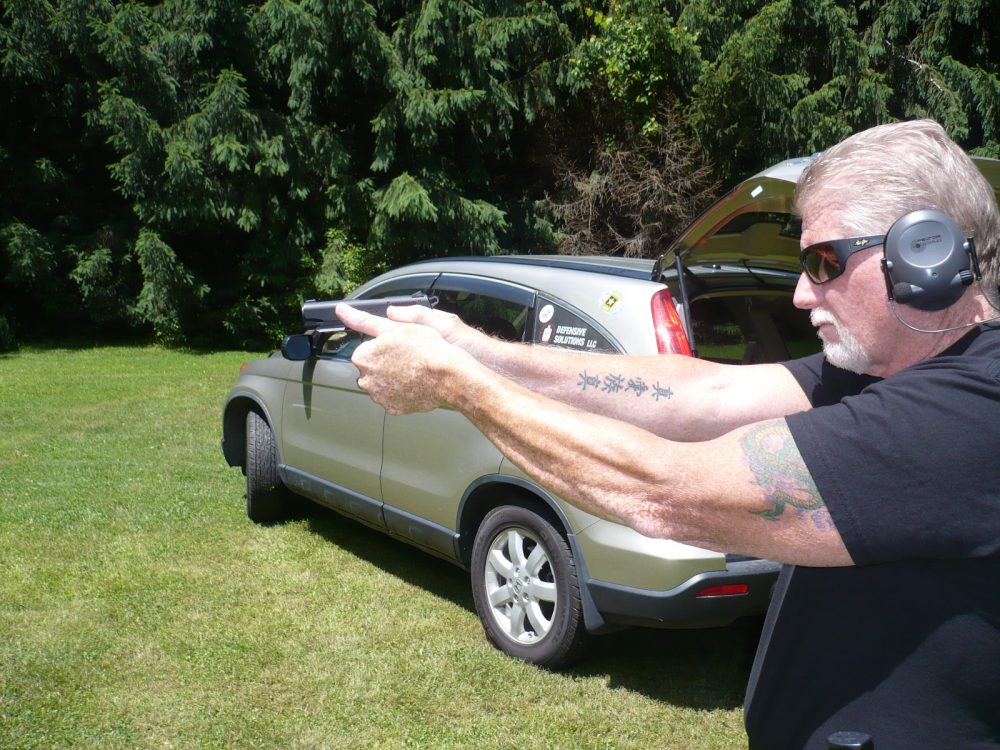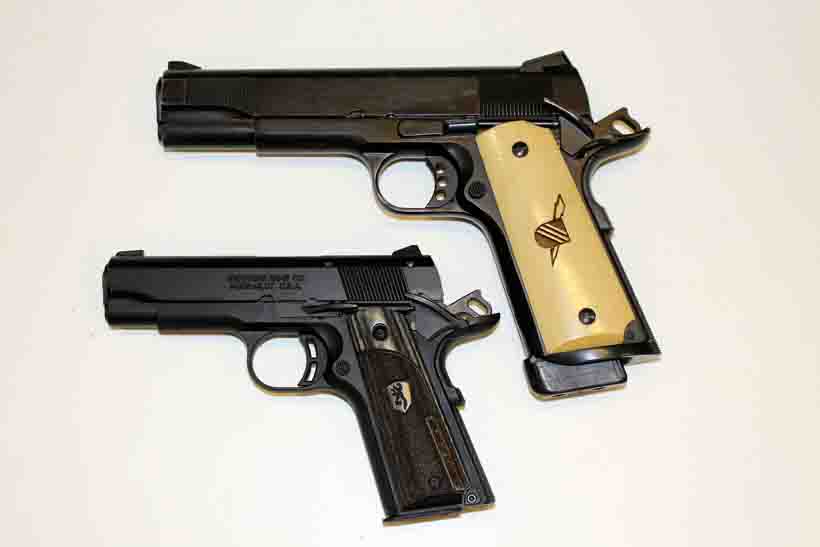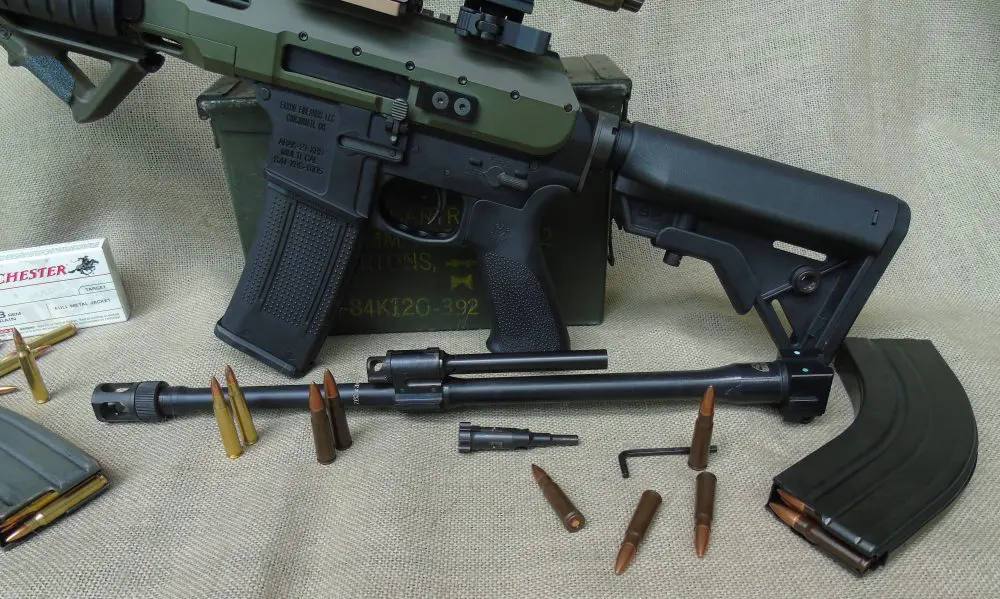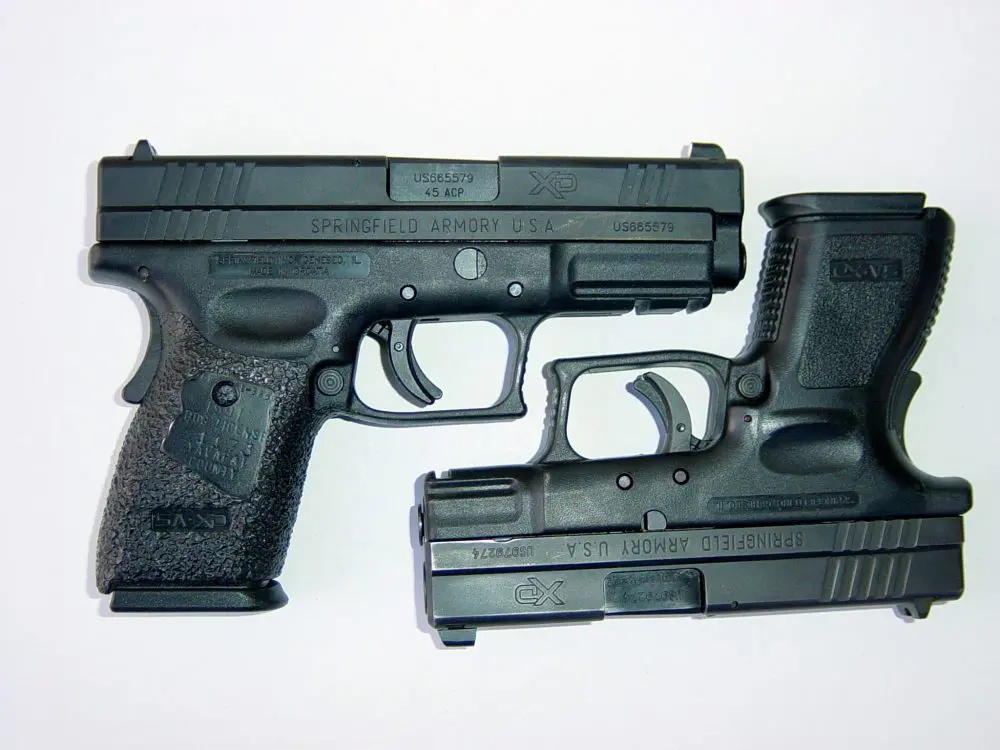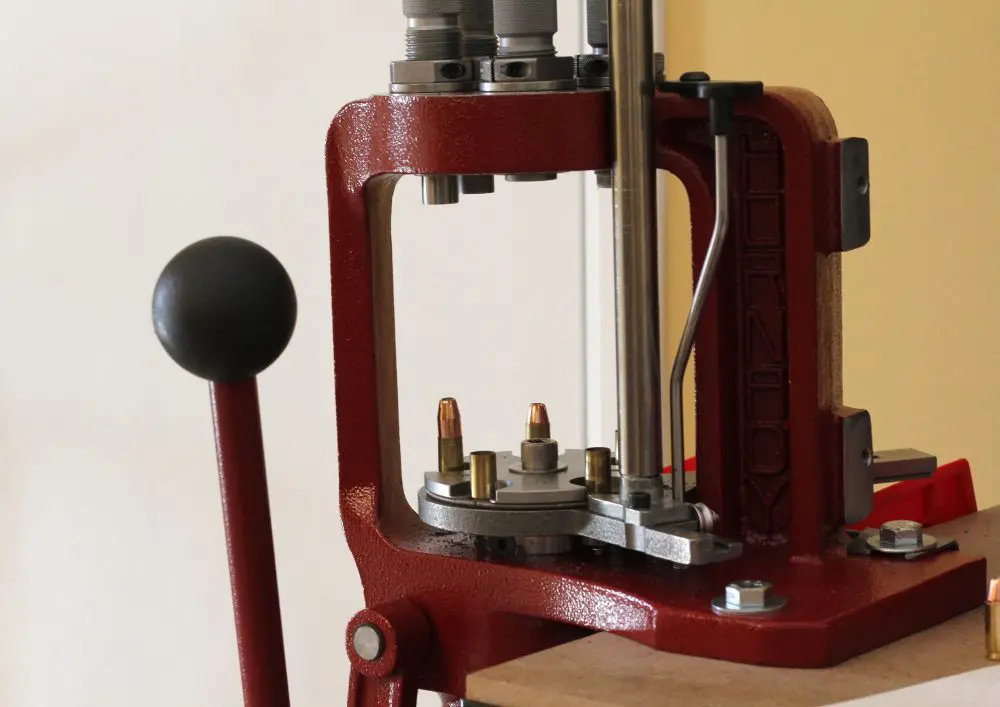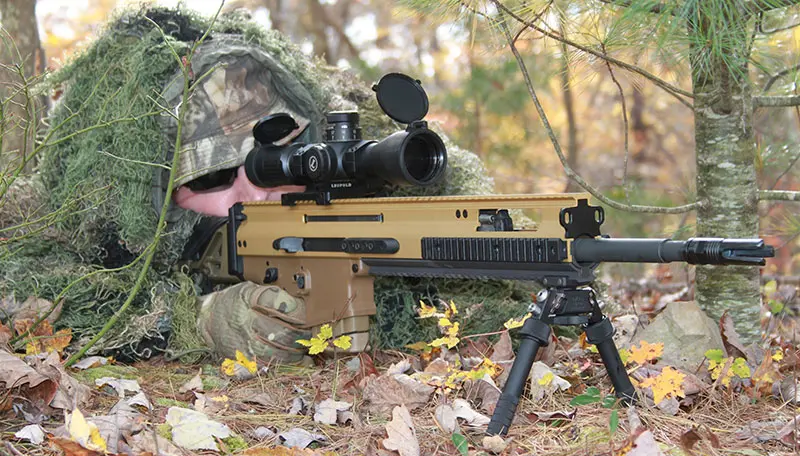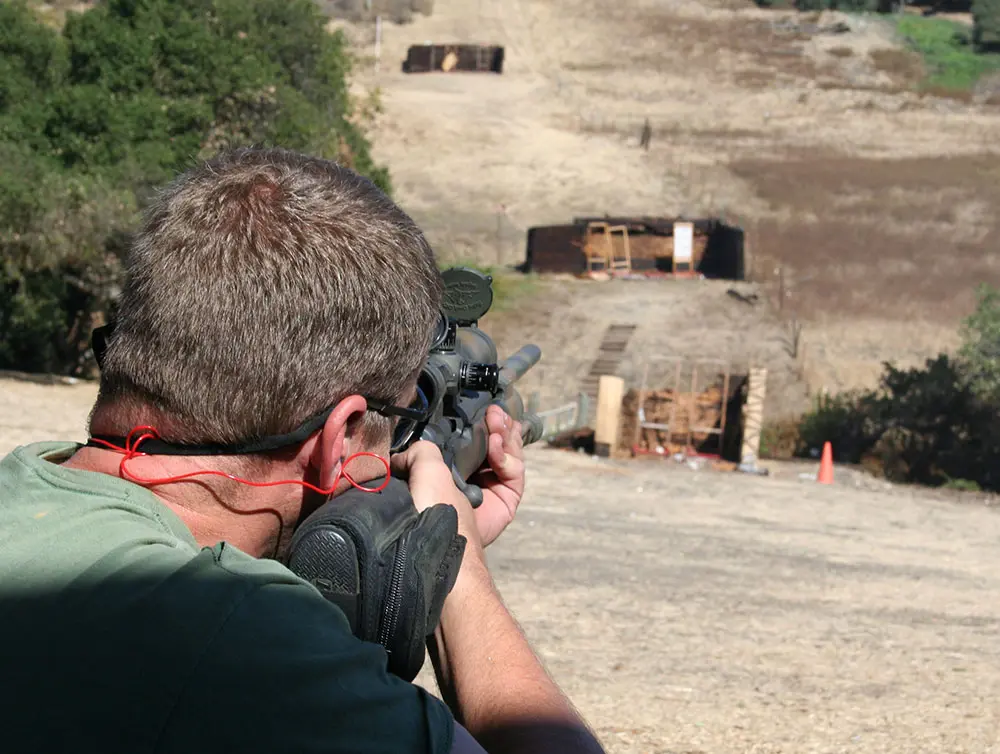“My, that is cute!” The grizzled, scarred, nasty old Command Sergeant Major looked like the last critter on earth who’d call a pistol “cute.” His military and police careers had made him as hard as woodpecker lips, and “cute” sounded strange coming from him. However, “cute” is the perfect word to describe the Browning Black Label 1911-22.
Sub-caliber training weapons are not a new idea. In 1934, the U.S. Army developed and fielded a .22-caliber training pistol, the Colt Service Ace. The reasoning was that .45 ACP ammo was expensive, and new recruits had a hard time learning to shoot the pistol. Sound familiar? The Army also fielded .22 Long Rifle (LR) training rifles that simulated the operation of the 1903 Springfield rifle.
Black Label 1911-22 standard model.
When I was a baby state trooper, I reported to the academy in Sitka, Alaska. The issue pistol was the S&W M19 revolver chambered in .38 Special/.357 Magnum. Some of the new shooters had problems even with .38 wadcutter ammunition. Remedial training was performed with M18 .22 LR revolvers that worked just like their big brothers. This allowed the shooter to get proficient without fighting the muzzle blast and recoil impulse, and save a few bucks in the process.
I’m a 1911 guy, and I own two Colt Ace pistols—one a pre-war, one a Series 70. Both are great guns, but neither has modern fighting pistol amenities such as fixed sights, beavertail grip safeties, and light rails.
They are both collector’s items now, so I don’t want to modify them. While they are great to shoot, they do limit some aspects of pistol training, like the use of a mounted light. And then divine intervention pointed me to the Browning booth at the 2014 SHOT Show.
Black Label .22, rail model.
Table of Contents
BROWNING BLACK LABEL
Browning came out with a 1911-22 a few years ago. I never shot one, since it was a true 1911 clone—tiny sights and no modern fighting pistol upgrades. As I strolled through the booth, my eyes fell on the 1911-22 Black Label, an answer to my prayers.
The Black Label has all the bells and whistles of a modern 1911—high-visibility fixed sights, extended thumb safety, memory bump grip safety, and a couple of models with a light rail. Be still, my pounding heart!
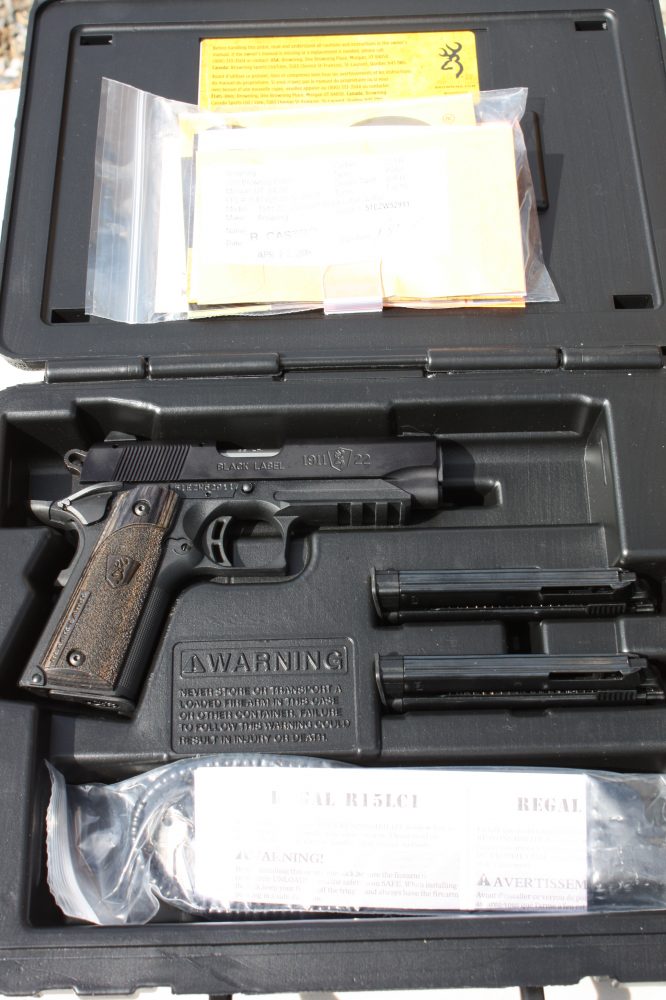
Picture a Colt Commander with current modifications. Now picture getting it wet, throwing it in the dryer, and shrinking it by 15%, and you’ve got the idea. I was able to obtain two samples, one with a light rail and one without. I also got four spare magazines so I could work reloads and malfunctions.
Both guns were well finished, lightweight, and fit my hand well. The ten-round magazine allows close to a full-size grip, which makes shooting and training more consistent. The grip angle and safety manipulations are pure 1911, so there isn’t any difference other than weight when you bring the gun from ready to on-target.
I did find it hard to keep my thumb on the safety and adequately depress the grip safety, and I haven’t quite figured it out.
I have a Blade-Tech holster for my Springfield EMP, and it fits the Black Label fairly well, allowing presentations from the holster. As with any rimfire, no dry firing because doing so may peen the chamber or break the firing pin.
TESTING
I scrounged around in the ammo locker and came up with seven different loads in .22 LR including Federal, CCI, Winchester and Remington, in lead, FMJ, and hollow point, from standard to high velocity.
I fired 50 rounds of each for reliability through the two guns and had no malfunctions in either. I even fired 50 rounds of Remington sub-sonic, which also ran very well. I now have hundreds of rounds through the guns and have not had a single stoppage.
These two pistols are not target pistols, but they performed admirably. I fired a couple of groups at five yards standing in Weaver. My first group of five, shooting CCI FMJ, all touched. The first shot of the second group went left, so I paid attention on five more and stacked them all touching in an orange dot. Not bad for a three-inch barrel and not-too-good trigger.
With both guns, I was able to hit anything I wanted at ranges out to 15 to 20 yards. The rail model shot about half an inch high at seven yards, but the standard model was dead on.
I shipped the guns to Jon Grossman at SheepDog Knife and Gun to remove the magazine disconnect safety, clean up the triggers, and build Kydex holsters and mag pouches for the two guns.
One flyer and five touching from five yards. Not bad for such a small pistol.
One problem we all face right now is finding .22 ammunition. Two years ago, you could walk into any box store and buy a brick of 525 rounds for $20. Finding 525 rounds today is hard, and you ain’t paying $20 for them. At my last gun show, I saw bricks priced from $50 to $70—and they were selling.
I asked a major manufacturer why this is so, and he told me that after Sandy Hook, every manufacturer was slammed with orders. Most are still a year behind in filling orders for center-fire ammo. It costs nearly the same amount to make a .22 and a .45, and the .45 sells for ten times more—simple economics.
Additionally, the skilled workers have been moved to making center-fire cartridges, and no one wants to train skilled workers to meet the demands of a temporary bubble. We all hope that .22 will again be plentiful and relatively inexpensive soon. Prices have dropped some, and .22 is still cheaper to shoot than center-fire ammo.
Command Sergeant Major (Ret.) Hood shoots Black Label. The following day he bought two—one for himself and one for his wife.
USES
In addition to a trainer, either gun would be a good trail gun or plinker. They’re very light, and a grouse or other edible critter would be history at reasonable ranges.
No one I know recommends a .22 as a first-choice defensive pistol, but we all know folks who struggle when shooting a larger caliber, and four or five chest hits with .22 Stingers should pretty much peg a bad guy’s fun meter—and it’s way better than no gun. At least four women shooters I know have fallen in love with the Black Label, bought and trained with them, and carry them as defensive pistols.
All in all, I’m totally impressed with the Browning Black Label 1911-22. I test and shoot lots of guns, and I bought the two T&E guns and ordered a third. I can train with it, shoot small game, or use it as a last-ditch defensive weapon. I’ve gone so far as to replace my .38 second gun with the Black Label, so I can shoot small predators if I ever have to walk home. It’s light, accurate, multi-purpose, reliable and affordable at around $600 retail.
Full-size 1911 and Browning Black Label 1911-22.
One of these days, .22 LR will be plentiful again. The use of a .22 trainer will let you put more rounds downrange, so you can perfect trigger control and sight alignment while shooting less expensive ammunition.
If a friend or family member wants to learn to shoot, start them on a .22 and let them become proficient with it before you move them up to a better defensive caliber. If you have kids, a day on the range with a .22 is hard to beat. If you’re a prepper, the more .22s and the more ammo you have, the better.
Other than training, just plinking with a .22 is outright fun. I can’t calculate the thousands of hours I’ve spent in gravel pits shooting cans, sticks, bottles, and other targets of opportunity. Even today, with my own range available, I’ll walk through the woods assassinating pine cones, rocks, clumps of moss or dirt.
If you’re a 1911 guy, get a Browning Black Label .22. Once you have the gun, get some ammo and get shooting.
SOURCES
Browning
(800) 333-3288
www.browning.com
SheepDog Knife and Gun
(618) 566-4682
www.sheepdogknifeandgun.com
